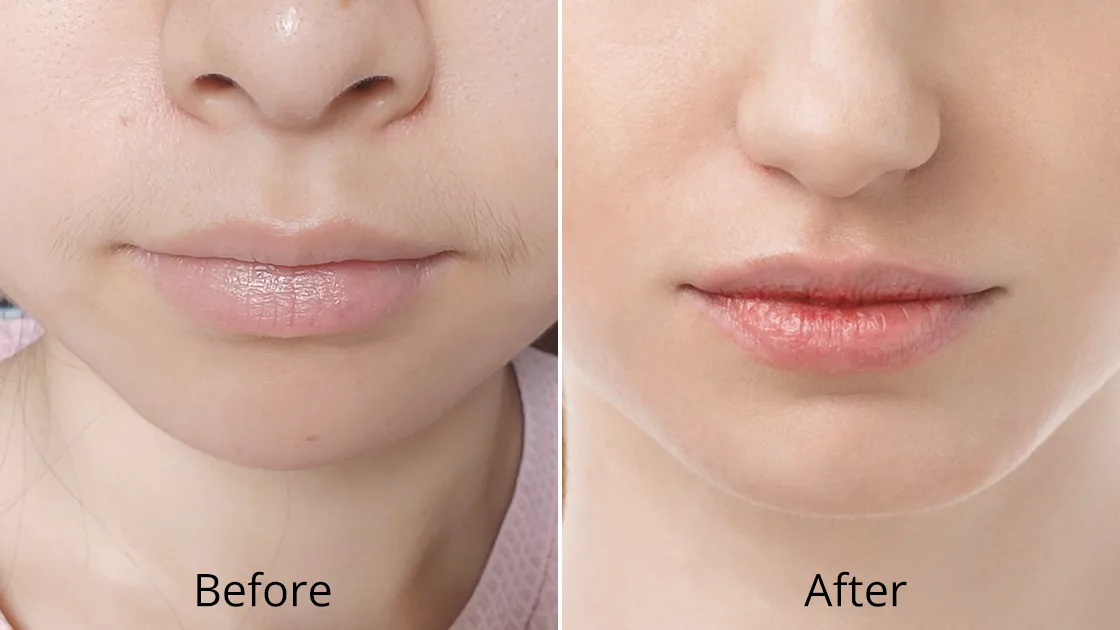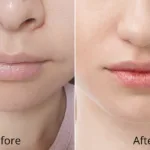Achieving significant weight loss is a remarkable accomplishment that transforms both health and confidence. However, many individuals who have undergone substantial weight reduction find themselves facing an unexpected challenge: excess loose skin that can diminish the satisfaction of their hard-earned results. This comprehensive guide explores radiofrequency (RF) skin tightening as an innovative, non-surgical solution for addressing post-weight loss skin laxity.
1. Introduction to RF Skin Tightening for Loose Skin After Weight Loss
The journey of weight loss often reveals underlying skin elasticity issues that weren’t apparent when the skin was stretched over excess adipose tissue. Understanding the available treatment options, particularly advanced non-invasive technologies like radiofrequency therapy, can help individuals make informed decisions about achieving their desired aesthetic outcomes.
1.1 Overview of Loose Skin After Weight Loss
Loose skin following significant weight reduction is a common dermatological concern that affects millions of individuals worldwide. When the body undergoes rapid or substantial weight loss, the skin’s structural integrity may be compromised due to prolonged stretching and loss of underlying supportive tissue. The dermis, which contains essential proteins like collagen and elastin responsible for skin elasticity and firmness, may not adequately contract to match the body’s new contours. This results in excess skin that appears saggy, wrinkled, or loose, particularly in areas of fat deposits.
1.2 What Is RF Skin Tightening?
Radiofrequency skin tightening uses safe electromagnetic waves to firm sagging skin through a nonsurgical cosmetic procedure. This advanced aesthetic technology utilizes controlled thermal energy delivery to stimulate the body’s natural healing and regenerative processes. RF devices operate within specific frequency ranges, typically between 3-300 GHz, to generate controlled heat within targeted skin layers without damaging the epidermis. The treatment works by delivering precise thermal energy to the deeper dermal and subdermal layers, where collagen remodeling and neocollagenesis occur. Unlike surgical interventions, RF therapy offers a minimally invasive approach to skin tightening with reduced downtime and recovery periods.
1.3 Why RF Technology Is Popular for Skin Rejuvenation
The popularity of radiofrequency technology in aesthetic medicine stems from its unique ability to address multiple skin concerns simultaneously while maintaining an excellent safety profile. Unlike laser treatments that may be limited by skin pigmentation, RF energy penetrates effectively regardless of skin color or type. The technology’s versatility allows practitioners to customize treatment parameters based on individual patient needs, skin thickness, and desired outcomes. Additionally, RF treatments can go along with other modalities like microneedling or ultrasound therapy to enhance results. The non-ablative nature of most RF treatments means patients can resume normal activities shortly after treatment, making it an attractive option for busy individuals seeking aesthetic improvement.
2. Understanding Loose Skin After Weight Loss
Before exploring treatment solutions, it’s essential to understand the physiological processes that contribute to skin laxity following weight reduction. This knowledge helps set realistic expectations and informs treatment planning decisions.
2.1 Causes of Loose Skin After Rapid Weight Loss
- Rapid weight loss doesn’t give the skin enough time to gradually shrink and adjust to the new body shape.
- Quick weight loss causes prolonged stretching of skin, damaging collagen and elastin, which are essential for skin’s elasticity.
- When subcutaneous fat is lost quickly, the skin loses its underlying support structure, leading to sagging.
- The skin’s natural ability to contract is weakened due to the rapid stretching and loss of fat beneath it.
- Rapid weight gain and loss cause the skin to stretch and lose its original structure, further affecting its ability to tighten.
2.2 Impact of Age, Genetics, and Lifestyle on Skin Elasticity
Age significantly influences skin elasticity and recovery potential following weight loss, as collagen production naturally decreases by approximately 1% per year after age 30. Older individuals typically experience more pronounced skin laxity due to cumulative sun damage, reduced cellular regeneration, and diminished production of essential structural proteins. Genetic factors play a substantial role in determining individual skin elasticity, collagen density, and healing response capabilities. Some individuals possess genetic variants that predispose them to better skin recovery, while others may have inherited tendencies toward reduced elasticity. Lifestyle factors including smoking, excessive sun exposure, poor nutrition, and inadequate hydration can significantly impact skin quality and recovery potential. Smoking particularly affects collagen synthesis and vascular function, impairing the skin’s ability to contract effectively after weight loss.
2.3 Areas Commonly Affected by Loose Skin Post Weight Loss
- Abdominal region: The stomach area is often the most affected, especially after pregnancy or substantial weight gain, due to extensive stretching and limited muscle support.
- Upper arms (triceps area): Known for developing “bat wings,” the upper arms sag due to gravity and reduced muscle tone, causing noticeable loose skin.
- Inner thighs: Loose skin in the inner thighs can lead to discomfort, chafing, and functional issues during activities such as walking or exercising.
- Chest and breast area: Both men and women can experience significant skin laxity in this area, which results in aesthetic concerns, although the effects differ between genders.

3. RF Skin Tightening: How It Works
Understanding the scientific mechanisms behind radiofrequency therapy provides insight into why this technology has become a cornerstone of non-surgical skin tightening treatments.
3.1 How Radiofrequency Energy Stimulates Collagen and Skin Tightening
Nonablative radiofrequency increases tissue temperature to induce thermal damage and stimulate neocollagenesis in deep skin layers and subcutaneous tissue. The process begins with controlled thermal injury that triggers the body’s natural wound healing cascade without causing visible surface damage. When RF energy heats target tissues to optimal therapeutic temperatures (typically 60-70°C), it causes controlled denaturation of existing collagen fibers, leading to immediate tissue contraction. This initial tightening effect provides some immediate visible improvement, while the subsequent inflammatory response initiates a prolonged healing process. Over the following weeks and months, fibroblasts are activated to produce new collagen through neocollagenesis, gradually improving skin texture, firmness, and elasticity. The thermal stimulation also enhances local circulation, promoting nutrient delivery and waste removal from treated tissues.
3.2 RF Skin Tightening: Non-Invasive Treatment for Skin Lifting
RF therapy uses low energy radiation to heat deep skin layers, stimulating collagen production to improve wrinkles and sagging skin. Unlike surgical facelifts or body contouring procedures, RF treatments work through the skin’s natural healing mechanisms rather than physical tissue removal or repositioning. The non-invasive nature of RF therapy means no incisions, sutures, or general anesthesia are required, significantly reducing treatment risks and recovery time. Modern RF devices incorporate advanced cooling systems and temperature monitoring to ensure patient comfort and safety throughout the treatment process. The controlled energy delivery allows practitioners to customize treatment intensity based on individual skin characteristics, thickness, and tolerance levels. Multiple treatment sessions are typically required to achieve optimal results, with each session building upon previous improvements to create cumulative enhancement effects.
3.3 How RF Skin Tightening Works in Different Areas of the Body
RF technology’s versatility allows for effective treatment across various anatomical areas, each requiring specific technical considerations and treatment approaches. Abdominal treatments typically require higher energy levels due to thicker skin and more substantial fat deposits, necessitating deeper penetration to reach target tissues effectively. The specialized applicators used for body treatments often feature larger surface areas and enhanced cooling systems to ensure uniform energy distribution across broader treatment zones. Facial RF treatments utilize smaller applicators with more precise energy control due to the delicate nature of facial tissues and proximity to sensitive structures. Areas with varying skin thickness, such as the transition between the neck and jawline, require careful energy modulation to prevent over-treatment of thinner skin while ensuring adequate heating of thicker areas. Treatment protocols are adjusted based on anatomical location, skin characteristics, and individual patient response to optimize safety and efficacy outcomes.
4. Benefits of RF Skin Tightening for Post-Weight Loss Skin
Radiofrequency therapy offers numerous advantages for individuals seeking to address loose skin following weight loss, making it an attractive alternative to more invasive procedures.
4.1 Non-Surgical Alternative to Skin Removal Surgery
RF skin tightening provides a compelling alternative to surgical procedures like abdominoplasty (tummy tuck), brachioplasty (arm lift), or thighplasty, which involve significant surgical risks, extended recovery periods, and permanent scarring. Unlike surgical interventions that physically remove excess skin, RF therapy works by stimulating the body’s natural regenerative processes to improve existing skin quality and elasticity. This approach eliminates risks associated with general anesthesia, surgical complications, and post-operative infections that can occur with invasive procedures. The non-surgical nature also means patients can maintain their regular work and activity schedules with minimal disruption. Additionally, RF treatments can be repeated as needed to maintain results, whereas surgical procedures typically represent one-time interventions with limited options for future enhancement. The cost-effectiveness of RF therapy compared to surgery makes it accessible to a broader range of patients seeking skin improvement.
4.2 Gradual, Natural-Looking Results
A key benefit of RF skin tightening is its ability to deliver gradual, natural-looking improvements. Unlike surgery, which offers immediate changes, RF therapy stimulates continuous collagen remodeling. This process continues for months after treatment, leading to more natural results. It avoids the “procedural” appearance often seen with surgery. The gradual progression also helps patients adjust to their evolving look, making the change feel more comfortable. The extended improvement period means results continue to enhance even after treatment ends, adding more value to the investment. This natural enhancement appeals to those who prefer subtle changes over dramatic transformations, making RF therapy ideal for conservative improvement.
4.3 Boost in Skin Texture, Tone, and Firmness
RF treatments go beyond just tightening skin; they provide comprehensive skin improvements by boosting cellular regeneration and enhancing dermal structure. The thermal stimulation improves blood circulation, helping deliver nutrients to treated tissues and promoting overall skin health. Neocollagenesis not only tightens loose skin but also enhances skin texture by reducing fine lines, smoothing irregularities, and creating a more even surface. It also improves skin tone and reduces the appearance of stretch marks and scarring by remodeling damaged tissue. Enhanced firmness occurs as collagen density increases, creating skin that feels tighter and more resilient. These improvements contribute to a rejuvenated appearance that extends beyond loose skin, offering additional benefits for patients.
4.4 Minimal Downtime and Recovery
The minimal downtime associated with RF skin tightening treatments is a major advantage for busy individuals who can’t afford long recovery periods. Most patients can resume normal activities right after treatment, experiencing only mild, temporary redness or swelling that resolves within hours. Unlike surgical procedures, which often require weeks of restricted activity, RF treatments allow patients to maintain their exercise routines and work schedules without major interruptions. The absence of incisions or wounds eliminates risks of infection, scarring, or delayed healing. Some mild tenderness or warmth in treated areas may last for 24-48 hours, but these effects are generally well-tolerated and don’t interfere with daily life. The convenience of minimal downtime enables patients to schedule treatments around their busy lives, making it easier to complete the full treatment series for optimal results.
5. RF Skin Tightening Procedure: Step-by-Step
Understanding what to expect during RF skin tightening treatments helps patients prepare appropriately and feel more confident about their treatment experience.
5.1 What to Do Before the RF Skin Tightening Session
Proper pre-treatment preparation is essential for optimal RF skin tightening results and patient safety. Schedule a consultation weeks before the treatment to discuss your medical history, medications, and aesthetic goals. Discontinue medications or supplements that increase bleeding risks, such as aspirin or ibuprofen, typically one week prior. Prepare the skin by avoiding sun exposure and tanning for at least two weeks. Tanned or sunburned skin may be more susceptible to thermal injury and pigmentation changes. On the day of treatment, arrive with clean, makeup-free skin in the treatment area. Wear comfortable clothing that allows easy access to target zones. Staying well-hydrated in the days leading up to the procedure can improve skin condition and treatment response. Following these guidelines helps maximize the effectiveness of the procedure and ensures a safer experience.
5.2 What Happens During an RF Skin Tightening Session
The RF skin tightening procedure starts with cleansing the treatment area and applying ultrasound gel or a conductive medium to ensure proper energy transmission. The practitioner adjusts the device settings based on skin characteristics, treatment area, and desired outcomes, considering skin thickness and patient tolerance. During treatment, the RF applicator moves systematically across the area, making overlapping passes for uniform energy distribution and consistent heating. Patients usually feel a warm sensation that gradually intensifies as tissue temperatures rise, often likened to a hot stone massage. Advanced RF systems feature real-time temperature monitoring and cooling mechanisms to maintain comfort while achieving therapeutic temperatures. Treatment duration varies depending on the area size and device used, typically lasting between 15 and 60 minutes.
5.3 Post-Treatment Care and Recovery Tips
- Apply gentle, fragrance-free moisturizers regularly to support the skin’s barrier and promote healing.
- Avoid sun exposure and protect treated areas with sunscreen, as heated tissues may be more sensitive to UV damage.
- If swelling occurs, apply ice packs or cold compresses for short periods, though this is uncommon with well-executed RF treatments.
- Refrain from using saunas, steam rooms, or taking hot baths for 24-48 hours to prevent heat accumulation in treated areas.
- Use mild, non-irritating cleansers and avoid harsh scrubs or exfoliants that could irritate sensitive skin post-treatment.
- Attend follow-up appointments to monitor healing and plan any necessary subsequent treatments.
6. Results and Longevity
Setting realistic expectations about RF skin tightening results and their duration helps patients make informed decisions about treatment commitments and long-term maintenance planning.
6.1 How Long Until You See Results?
RF skin tightening results follow a biphasic response, with both immediate and gradual improvements over time. Immediate results can be seen within days due to collagen contraction and tissue dehydration, offering initial tightening. However, the most significant changes occur over 2-6 months as new collagen fibers form and mature. Peak results typically emerge 3-4 months post-treatment, when collagen remodeling reaches its peak, although some improvement can continue for up to 6-12 months. The timeline for visible results varies depending on individual factors such as age, skin condition, and treatment specifics. Younger patients with better skin quality tend to see quicker results, while those with more severe skin laxity may require a longer period to notice substantial improvement.
6.2 Factors Affecting Duration of Results
- Age: Younger patients tend to retain results longer because of better collagen production and slower aging. Older individuals may see faster fading.
- Lifestyle factors: Sun protection, smoking cessation, proper nutrition, and regular exercise help maintain results by supporting skin health and collagen.
- Environmental factors: Exposure to pollution, climate conditions, and occupational hazards can speed up skin aging and reduce treatment results.
- Genetic factors: Collagen production, skin elasticity, and aging patterns vary among individuals, influencing result longevity. However, these factors cannot be changed.
6.3 Before-and-After Examples & Case Studies
Clinical studies and case reports show the effectiveness of RF skin tightening for various patient groups and treatment areas. Research on radiofrequency microneedling for thigh skin laxity from weight loss shows promising nonsurgical results. Patient outcomes are often documented with standardized photography taken at consistent intervals to assess improvements in skin laxity, texture, and contour. Successful cases demonstrate a reduction in skin laxity, better texture, and enhanced skin quality, which correlates with higher patient satisfaction. Long-term studies show that most patients maintain some improvement for 12-24 months after treatment, though individual results vary. Case studies emphasize the need for realistic expectations. Patients with moderate skin laxity tend to see more noticeable improvements than those with severe laxity, who may need combination treatments or surgery.
7. Risks, Side Effects, and Safety Considerations
While RF skin tightening is generally considered safe, understanding potential risks and contraindications is essential for informed treatment decisions and optimal safety outcomes.
7.1 Common Temporary Side Effects
- Mild erythema (redness): Redness in treated areas is common and usually resolves within 2-6 hours as tissues cool and circulation normalizes.
- Edema (swelling): Swelling may occur but typically subsides within a few hours post-treatment.
- Temporary skin sensitivity or tenderness: Some patients may experience mild sunburn-like tenderness, which usually resolves within 24-48 hours with proper care.
- Skin texture changes: Temporary roughness or dryness may develop but improves with moisturizing and gentle care.
- Temporary pigmentation changes: Rare, especially in darker skin types, though the risk is minimized with proper treatment parameters and device selection.
7.2 Who Should Avoid RF Skin Tightening
- Active skin infections or open wounds: Patients should wait until the infection or wound is fully healed to avoid complications.
- Implanted electronic devices: Those with pacemakers, defibrillators, or insulin pumps should avoid RF due to potential electromagnetic interference.
- Pregnancy and breastfeeding: RF skin tightening is not suitable during these periods due to potential risks to the fetus or altered physiological states.
- Severe medical conditions: Conditions like uncontrolled diabetes, autoimmune disorders, or bleeding disorders may impair healing and increase complication risks.

10. Key Takeaways on RF Skin Tightening for Post-Weight Loss Skin
RF skin tightening offers a safe, non-surgical solution for loose skin after weight loss by stimulating natural collagen production with controlled thermal energy. It provides gradual, natural-looking improvements without the risks and recovery time of surgery. Ideal candidates have mild to moderate skin laxity, are in good health, and understand the gradual nature of the results. While RF cannot match the dramatic outcomes of surgical skin removal, it offers key advantages such as safety, convenience, and natural results. Ongoing advancements in RF technology, such as improved energy delivery and personalized protocols, continue to enhance treatment effectiveness. Consultation with qualified professionals is crucial to assess candidacy and develop a tailored treatment plan. RF skin tightening supports both aesthetic and psychological benefits, helping individuals maximize their weight loss results while maintaining a non-invasive approach. As technology advances, these treatments will become even more accessible and effective for post-weight loss care.








